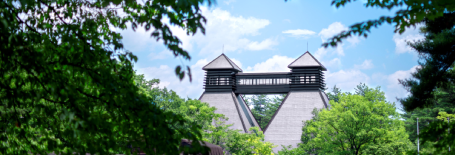Suntory® Whisky FAQs
Frequently asked questions of our product
How is Suntory whisky made?
To learn about the Suntory method of whisky production, please visit https://whisky.suntory.com/en/na/the-house/philosophy
Why is Japanese whisky called "whisky" without the e?
The Japanese first looked toward Scotland to learn how to make whisky. As such, whisky is spelt without an "e" in the Scottish tradition.
What does Suntory whisky taste like?
Suntory whiskies are described as Subtle, Refined and Complex. To learn more about each whisky, please visit https://whisky.suntory.com/en/na/products
How is Suntory whisky different from other types of whisk(e)y ?
Suntory Whisky is unique from other whiskies due to the purity of the water used in production, the distinct four seasons in which the whiskies mature, and the Art of Blending which produces the signature subtle, refined and complex flavor. To learn more about each of these aspects, please visit https://whisky.suntory.com/en/na/the-house/philosophy
How do you recommend one drinks Suntory whisky?
We recommend enjoying Suntory Whiskies in any number of styles: straight, on the rocks, mizuwari (with water), oyuwari (with warm water), Highball, etc. For specific recommendations, please visit https://whisky.suntory.com/en/na/rituals/how-to-enjoy.
What food pairs well with Suntory/Japanese whiskies?
Suntory Whiskies pair well with a variety of foods, particularly Japaneses cuisine. The below may serve as a simple guideline, but we recommend you discover your own favorite pairings as well.
- Yamazaki Brand: Foods with slight sweeness. Soy sauce-based dishes also pair well.
- Hakushu Brand: Simple and refreshing dishes, as well as salt-and-pepper seasoned dishes pair well.
- Hibiki Brand: Essentially pairs with anything.
- Toki Brand: Light pub dishes, such as yakitori.
Where are Suntory whisky distilleries located? How can I visit them or book tours?
Our Yamazaki Distillery, located on the outskirts of Kyoto, and our Hakushu Distillery, located at the foot of the Japan Southern Alps, are both open to the public. Tours can be booked online at https://whisky.suntory.com/en/na/distilleries. The Chita Distillery, located on the Chita Peninsula, is not open to the public.
What is the difference between "Single Malt" "Single Grain" and "Blended" whisky?
"Single Malt" refers to a whisky which is made of malt whiskies produced at a single distillery. In the same way, "Single Grain" refers to a whisky which is made of grain whiskies produced at a single distillery. "Blended" means a whisky which is made of a blend of malt and/or grain whiskies produced at several different distilleries.
What awards have Suntory Whiskies won in the past?
To learn about the awards the House of Suntory has won, please visit https://house.suntory.com/en/na/awards.
What is the history of whisky making in Japan? When did it begin? Who is Shinjiro Torii?
Whisky making in Japan began in 1923, when Shinjiro Torii--the founder of the House of Suntory--first began construction on Suntory's Yamazaki Distillery. Production began a year later, in 1924. To learn more, please visit https://whisky.suntory.com/en/na/the-house/history
What is Suntory whisky made from?
Suntory produces a diverse array of malt and grain whiskies. A core ingredient is the pure waters used for mashing. Our malt whiskies are made with malted barley, and our grain whiskies with corn.
Where can I purchase Suntory Whiskies?
Please visit our Product Locator https://whisky.suntory.com/en/na/where-to-find
VISIT US
-


YAMAZAKI DISTILLERY
YAMAZAKI. WHERE IT ALL BEGAN IN 1923
-


HAKUSHU DISTILLERY
HAKUSHU. WHERE INSPIRATION CONTINUES
© 2019 Beam Suntory Inc., 222 W Merchandise Mart Plaza, Chicago, IL 60654. All Rights Reserved.

